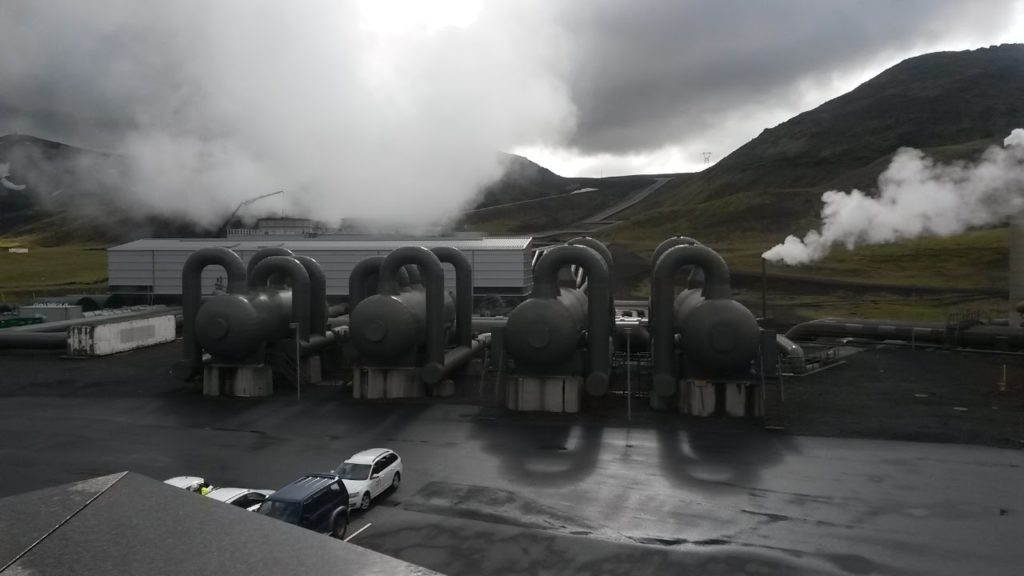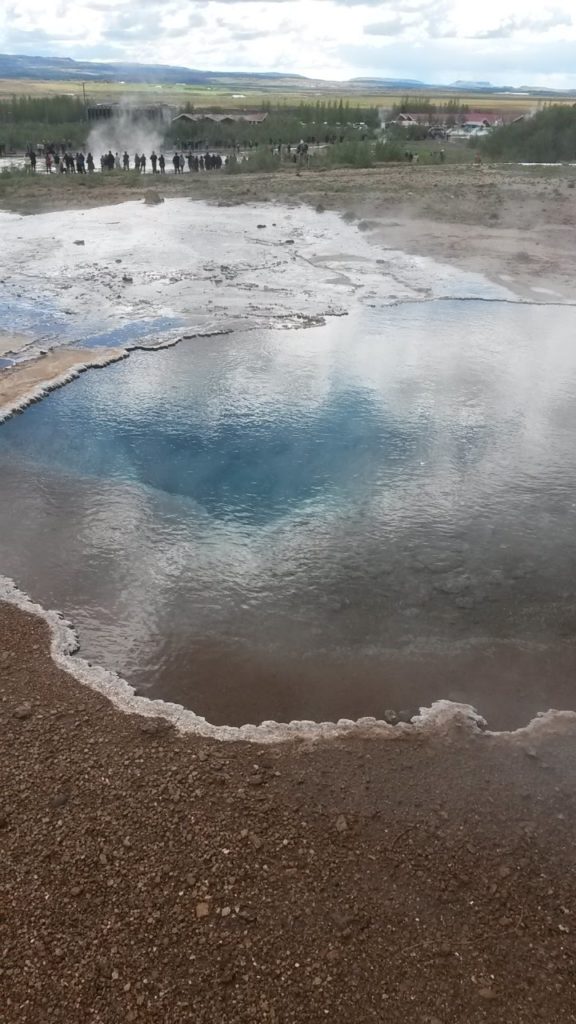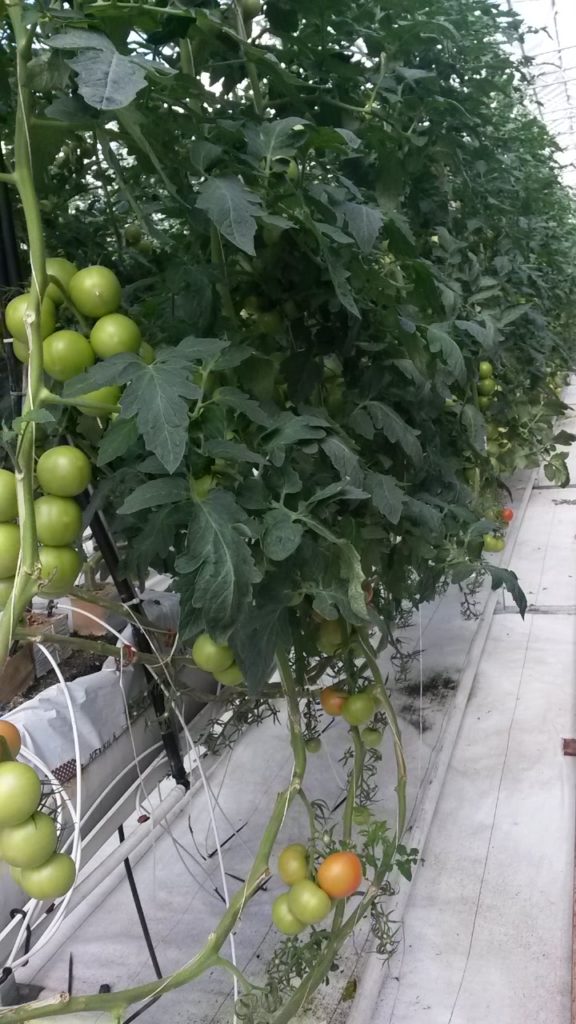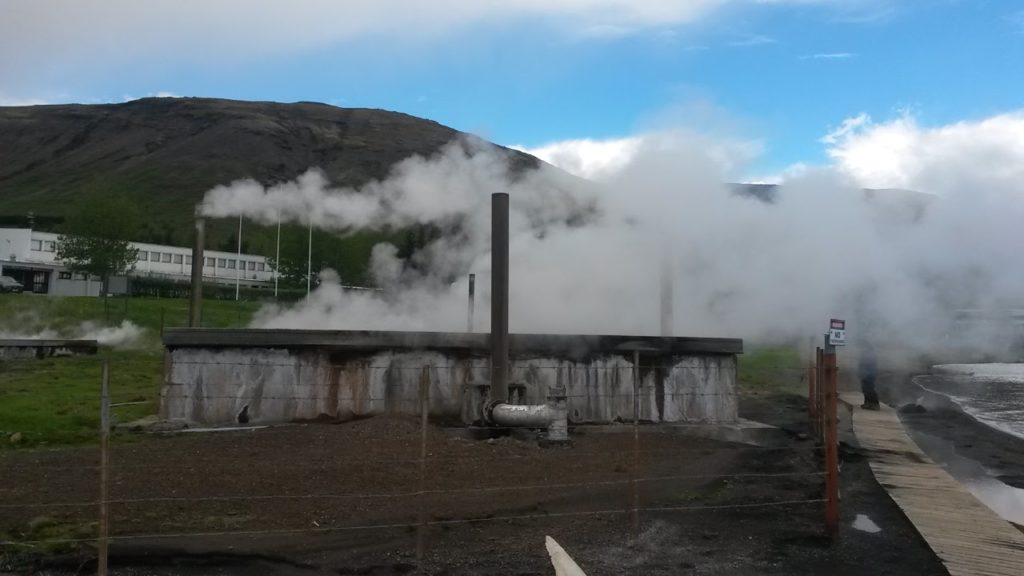Because of Iceland’s location between the North American and Eurasian tectonic plates there is a lot of geothermal energy below the surface. In fact just driving around you can see steam just rising up out of the mountains. The Earth’s internal heat warms up the ground water which the Icelanders have learned to use in a variety of ways.
The first geothermal related cite we visited was the Hellisheiði Power Station right outside of Reykjavik where we got a tour and saw the turbines and condensers. The power plant works by injecting water into boreholes which heats up underground. The injected water turns into a mixture of steam and hot water and then returns to the surface. The hot water is pumped to the city of Reykjavik where it is used for space heating. The steam is used to produce electricity by turning a turbine which turns a generator which creates electricity. The plant there produces 300 MW of energy making it the largest geothermal plant in Iceland and the sixth largest in the world. This form of energy production and space heating is very environmental and releases no carbon dioxide into the atmosphere. The only major waste is hydrogen sulfide that gets into the steam when it is underground. Before the steam is released into the atmosphere 60% of the hydrogen sulfide is scrubbed out.
Unlike other forms of renewable energy, like solar or wind, geothermal is limited which causes interesting challenges. For example, the Hellisheiði site uses 40 bore holes to create energy, and has a total of 58 drilled. But some of the 58 are either not working or being rested so that they can be used in the future. If too many holes are drilled then the pressure of the heated water will drop making it useless in creating energy. Therefore there has to be a lot of research done on the capacity of a location before a power plant is built.
It was fun to see a state-of-the-art sustainable energy plant that Iceland take so much pride it. The country makes a big effort to use renewable energies like geothermal and hydroelectric. Not only do these options produce very little waste, they also create low energy costs. After the construction of the plant there is no need for expensive oil, coal, natural gas, or uranium. Using its natural geothermal energy Iceland is able to take a large burden of both the environment and its people by lowering emissions and costs.
The next day we visited the Geysir Hot Springs along the Golden Circle road. The area included many pools of boiling mineral water that smelled like rotten eggs because of the sulfur in the ground. They create unique colors in the surrounding rocks because of all the minerals they deposit there. It was hard to tell how deep the pools were and our tour guide, Árdís, said that they change size all the time.
The name-sake of the area though was the water geyser that would erupt every 4-7 minutes making it one of the most active in the world. As a comparison Old Faithful in Yellowstone National Park only goes off every 45 to 120 minutes, but erupts for longer. While we waited for it to go off it was funny to watch everyone wait with their camera phones out so that they did not miss the chance to take a photo. In fact the first time I went off I wanted to get a picture so bad I kind of missed actually watching it. So I had to stick around to see it again, this time without a phone. But I do get to add a picture to this blog.
Next on the Golden Circle road we visited the Friðheimar greenhouses which grew tomatoes. I didn’t expect a country which is completely dark half of the year to grow many fruits, but they had large greenhouses completely filled with tomatoes. They used geothermal energy to keep the tomatoes warm and had lights all over to keep them fed. They had to import boxes full of bees to pollinate the plants because, unsurprisingly, bees cannot survive Icelandic winters. We got a short tour of the greenhouses and got to try some of their cherry tomatoes which were delicious.
The last geothermal related spot we visited that day was Laugarvatn a natural bathing site on a lake with the same name. There was a considerable amount of steam coming out of the ground which smelled awful because of all the sulfur. The lake water near the geothermal cite was warmer and in some places bubbling.
Near the geothermal activity people were making Rúgbrauð which is a type of rye bread that is cooked in the ground. People will prepare the bread dough, dig a hole near the hot springs, bury the dough, and cover it with a mound. The bread we saw had a little sign too with the name of whoever was making the bread. After a day or so of baking you just dig up the bread which should be done. Sadly, I didn’t get to try any while we were there, but maybe that is a good thing because it is also known as thunder bread because it makes you fart a lot.
While visiting Iceland it was neat to see how many different ways geothermal energy contributes to the country. I expected the geothermal plants, but I had no idea it was used for agriculture and cooking! Plus, seeing the geysers and hot springs were a once in a life time experience I will never forget.





